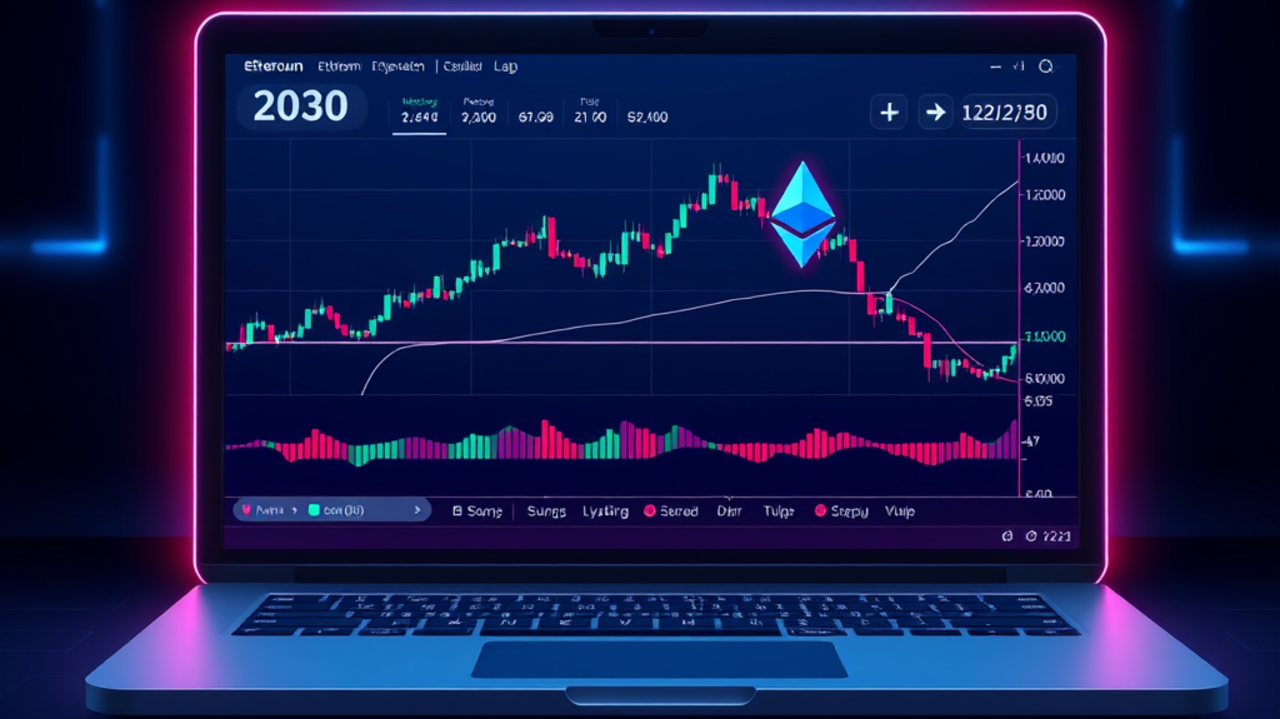What Will Ethereum Be Worth in 2030?
Ethereum’s future remains a subject of intense debate, with forecasts stretching from a potential low of around $360 to an ultra-bullish high approaching $180,000 per ETH.
These extremes reflect the range of market scenarios, from significant underperformance driven by headwinds to a transformative digital finance revolution that could propel Ethereum to unprecedented heights.
Key Takeaways:
Hide- VanEck: Base-case ETH is estimated at ~\$22,000 by 2030, with extreme cases ranging from \$360 (bear) to \$154,000 (bull) using a discounted cash flow model. (Source: VanEck)
- ARK Invest: A highly bullish view projects ETH around \$170,000–\$180,000 per coin, driven by its growing dominance in DeFi and Web3. (Source: Markets Insider)
- Standard Chartered: Forecasts ETH between \$26,000–\$35,000, tying its value to Bitcoin’s performance and Ethereum’s market share in digital finance. (Source: Cointree)
- Finder Survey: A panel of fintech experts averaged a prediction near \$45,000 per ETH by 2030, despite a wide range of individual estimates. (Source: Cointree)
- Deltec Bank: Projects an ETH price of around \$20,000 (≈AU\$28K–30K) by 2030, balancing strong fundamentals with competitive risks. (Source: Cointree)
- Goldman Sachs: Suggests ETH could eventually outperform Bitcoin as a dominant store of value thanks to its broad real-world utility. (Source: Cointelegraph)
- JPMorgan: Offers a cautious view with a fair value estimate of \$1,500–\$2,000 per ETH, assuming limited network growth beyond current levels. (Source: Cointree)
Overview of Ethereum’s Current Market Position

Ethereum, as a leading player in the cryptocurrency space, has established itself as a pivotal platform for decentralized applications and smart contracts.
With a market capitalization exceeding $200 billion as of October 2023, Ethereum accounts for a significant portion of the total cryptocurrency market, reflecting its robust adoption and utility.
Ethereum’s market cap surpassing $200 billion highlights its significant role and widespread adoption in the cryptocurrency landscape.
The Ethereum network supports thousands of decentralized applications (dApps) and has facilitated billions in transaction volume, underscoring its role in the DeFi and NFT ecosystems.
Furthermore, the shift to Ethereum 2.0, incorporating a proof-of-stake consensus mechanism, aims to enhance scalability and energy efficiency, attracting institutional investors.
This evolution, coupled with ongoing developer engagement, positions Ethereum as a cornerstone of blockchain innovation, driving interest and investment in its future potential.
Key Factors Influencing Ethereum’s Future Value

As the cryptocurrency market evolves, several key factors are poised to greatly influence Ethereum’s future value.
Regulatory developments will play a vital role, as increased scrutiny could either bolster or hinder investor confidence.
Market adoption, particularly among enterprises and developers, will considerably impact Ethereum’s utility and demand.
The competition landscape is also essential; as new blockchain technologies emerge, Ethereum must maintain its edge in scalability and functionality.
Additionally, macroeconomic trends, such as inflation and investor sentiment towards risk assets, will influence capital inflow into cryptocurrencies.
Finally, the growing emphasis on sustainability may affect Ethereum’s attractiveness, especially as it shifts to a proof-of-stake model, potentially enhancing its appeal to environmentally-conscious investors.
Market Trends and Investor Sentiment
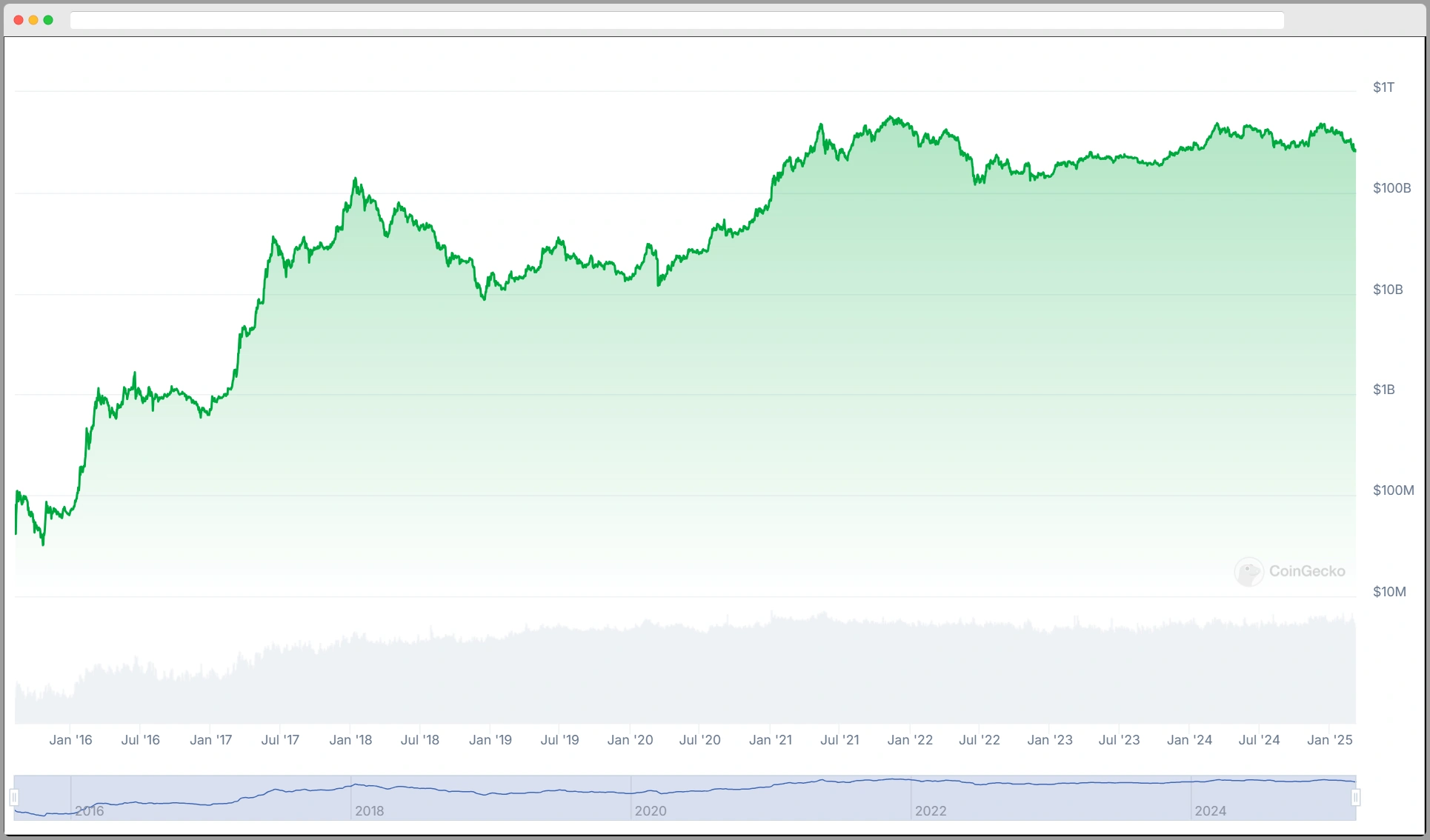
While fluctuations in the cryptocurrency market are common, ongoing trends indicate a growing optimism among investors regarding Ethereum’s future.
Recent data shows increased institutional investment and a surge in decentralized finance (DeFi) applications built on the Ethereum blockchain, suggesting a strong use case that underpins its value.
Additionally, reports indicate a rise in developer activity, reflecting sustained innovation and technological advancement within the ecosystem.
Market sentiment has also been buoyed by Ethereum’s shift to a proof-of-stake consensus mechanism, which enhances scalability and energy efficiency.
These factors combined create a favorable environment for Ethereum, fostering a belief that its value could markedly increase by 2030 as it positions itself as a leader in the blockchain space.
Comparison With Other Cryptocurrencies
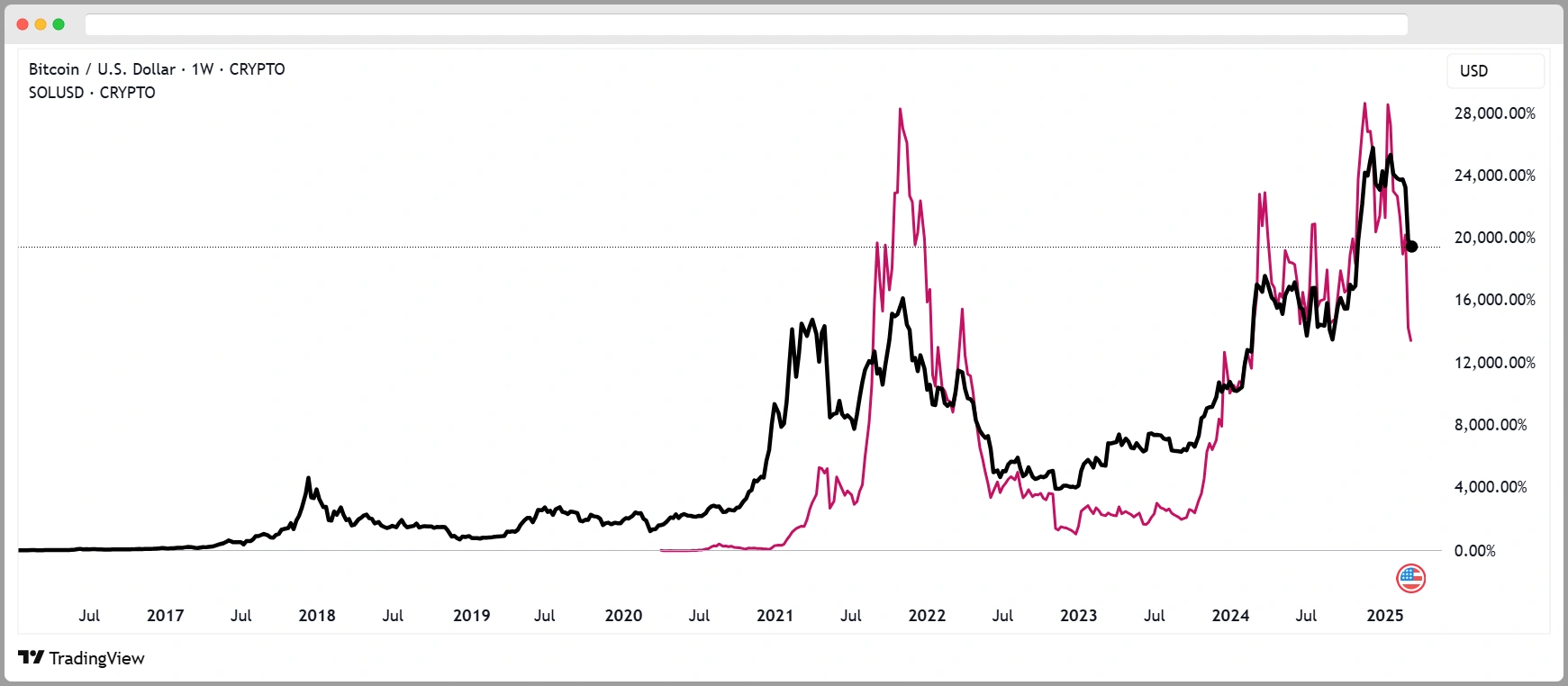
A thorough analysis of Ethereum in relation to other cryptocurrencies reveals distinct advantages that may position it favorably in the coming years. As the second-largest cryptocurrency by market capitalization, Ethereum benefits from a robust ecosystem and widespread adoption.
Its smart contract functionality sets it apart, enabling diverse decentralized applications (dApps) that other cryptocurrencies struggle to match.
- Innovative DeFi projects driving user engagement and transaction volume
- NFT marketplaces flourishing on the Ethereum blockchain, enhancing cultural relevance
- Interoperability with layer-2 solutions improving scalability and reducing fees
These elements contribute to Ethereum’s resilience and growth potential against competitors like Bitcoin and emerging altcoins.
The emphasis on continuous development and community support further solidifies Ethereum’s position as a leader in the evolving cryptocurrency landscape.
Expert Predictions for Ethereum by 2030
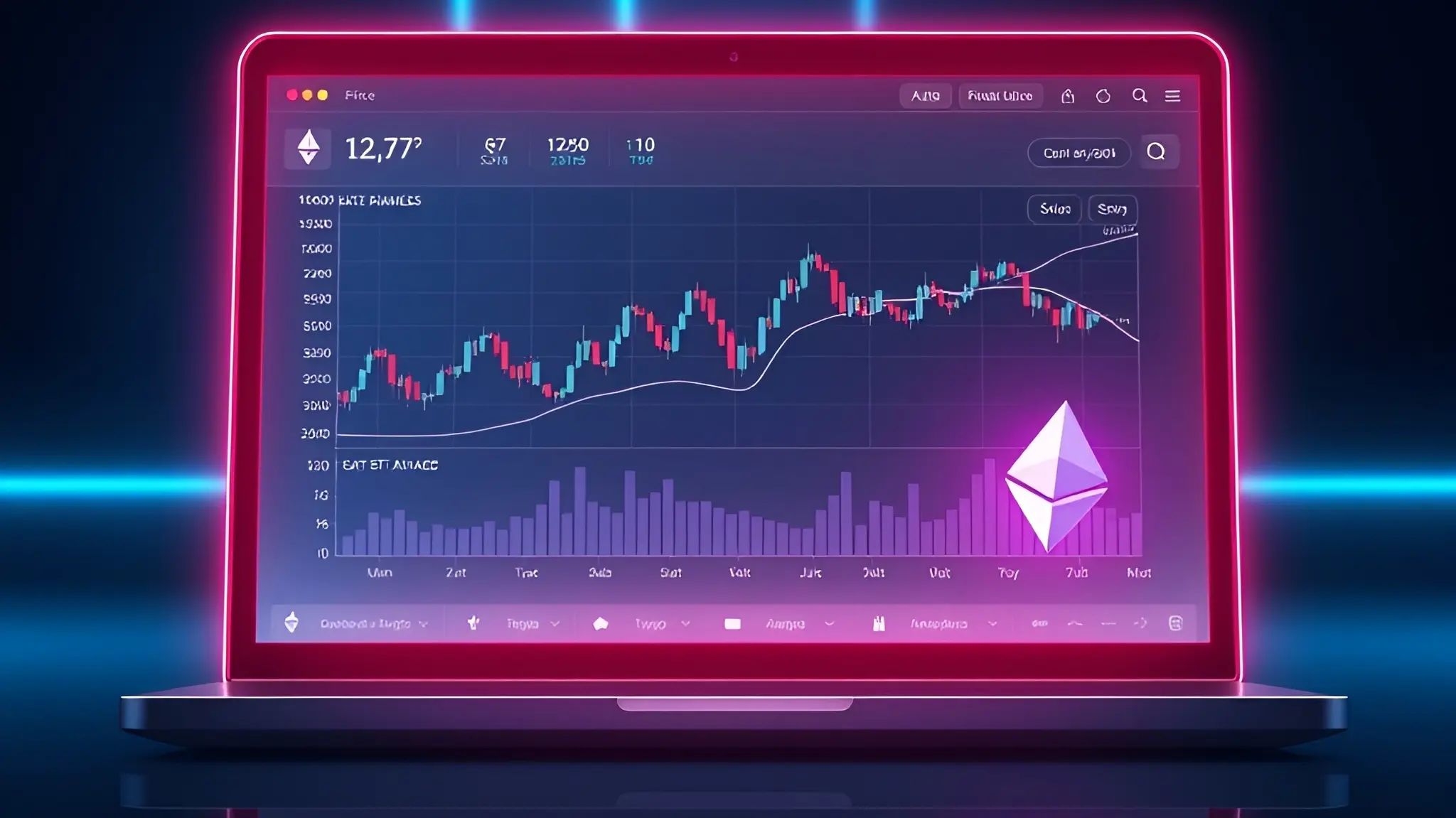
Experts have laid out a spectrum of scenarios for Ethereum’s value by 2030, each tied to different market dynamics and technological developments:
- Extreme Bear Case: In a scenario where Ethereum fails to secure a robust share of the blockchain economy, its price could plummet to around $360, reflecting dramatic underperformance and limited adoption.
- Conservative Outlook: Some analyses suggest that if Ethereum’s network activity and adoption remain tepid, its price might stabilize in the low-single-digit thousands, with figures around $1,500 to $2,000 per ETH.
- Steady Growth Scenario: More moderate forecasts predict that as Ethereum steadily expands its role in decentralized finance and smart contracts, its price could settle between $20,000 and $35,000. This view rests on the idea of sustained but measured adoption and gradual improvements in network efficiency.
- Base Case for Robust Expansion: Under conditions where Ethereum captures a significant share of digital financial activities, some models point to a base-case value of roughly $22,000 per coin, marking steady growth as its ecosystem matures.
- Bullish Mid-Range Projections: A number of experts lean towards a scenario where broader institutional adoption and continued innovation drive the price into the $40,000 to $50,000 range, suggesting a strong yet balanced market evolution.
- Ultra-Bullish Scenario: The most optimistic outlook envisions Ethereum emerging as the dominant platform for a new wave of digital finance, pushing its value to between $154,000 and $180,000 per ETH if it fundamentally transforms global financial systems.
Potential Risks and Challenges Ahead
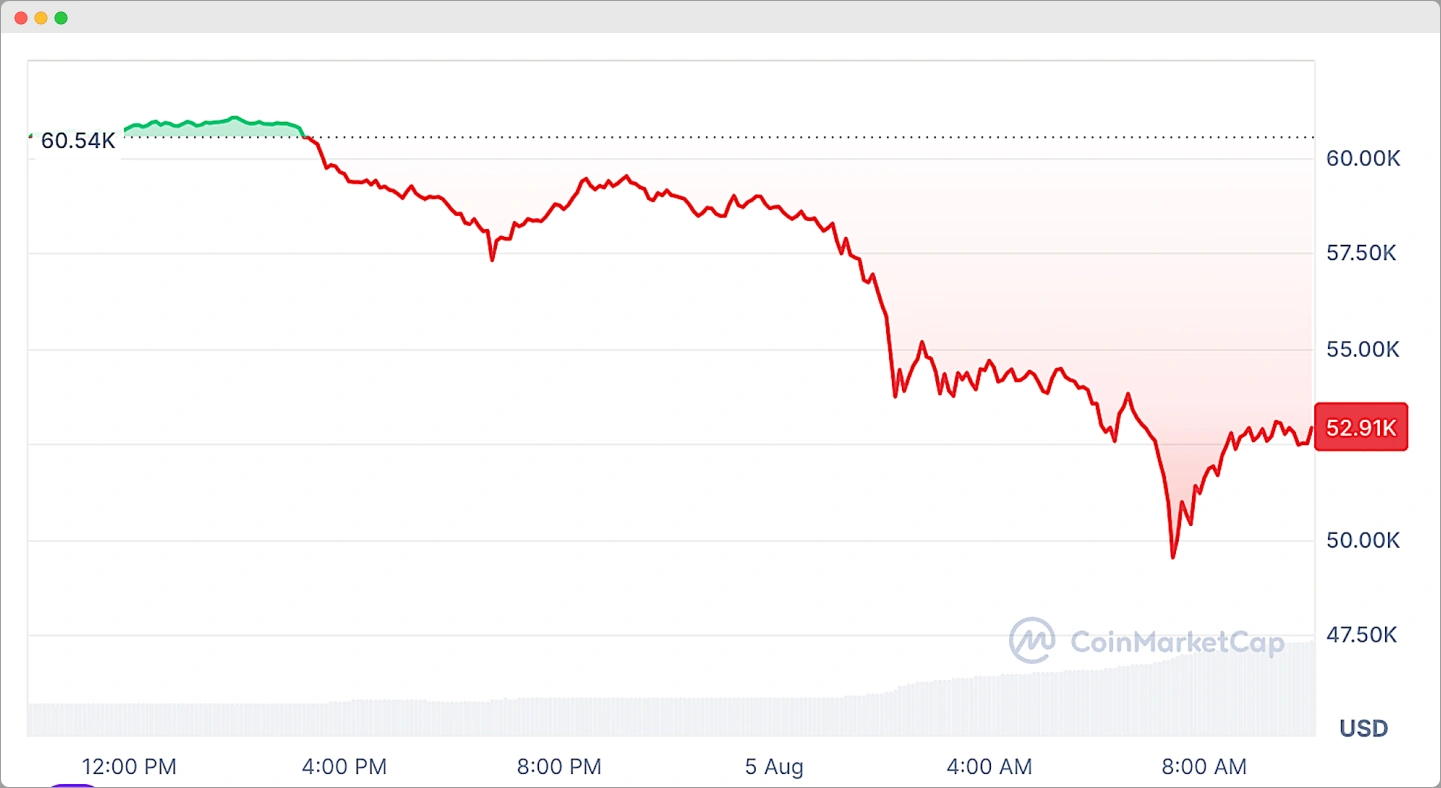
Although the future of Ethereum appears promising, several potential risks and challenges could impede its growth trajectory by 2030.
These factors may undermine its adoption and scalability, leading to volatility and uncertainty in its valuation.
- Regulatory Scrutiny: Increasing government regulations could restrict Ethereum’s operational flexibility and market participation.
- Technological Competition: Emerging blockchain technologies may offer superior functionality, drawing developers and users away from Ethereum.
- Security Vulnerabilities: As Ethereum evolves, the risk of hacks and exploits could erode user trust and investor confidence.
Addressing these challenges will be essential for Ethereum to maintain its position as a leader in the decentralized finance ecosystem, emphasizing the importance of innovation and resilience in its strategic roadmap.
Wrapping Up
When reflecting on Ethereum’s potential by 2030, the market could swing between extremes.
On one end, significant obstacles or competitive pressures might drive the price down to a stark low of $360.
On the other, if Ethereum successfully capitalizes on its network effects and cements its role as the backbone of digital finance, prices could soar close to $180,000 per coin.
This wide range underscores both the promise and the inherent uncertainties of the evolving cryptocurrency landscape.

